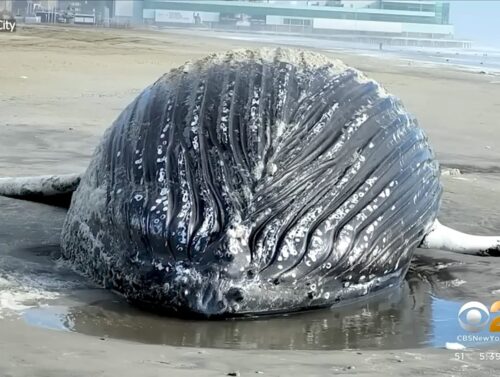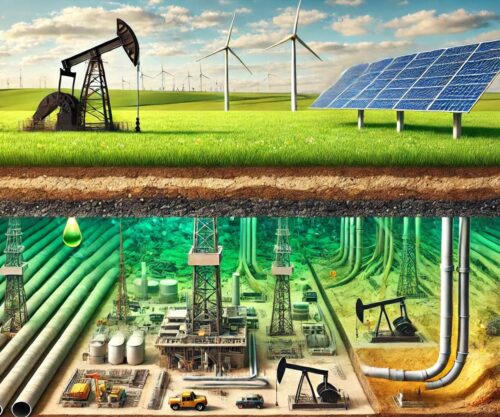
There’s nothing new about biofuels, or fuels derived from plants such as trees and corn. They’ve been used since the dawn of history when people started burning them for cooking and heating their homes. [emphasis, links added]
However, after the discovery of oil in 1859, when huge supplies became available in Texas and Oklahoma, petroleum became a less expensive alternative to biofuels.
Fossil fuels have enabled humanity to experience tremendous prosperity and technological development. Our civilization rests on affordable energy from petroleum, natural gas, and coal.
However, the UN Intergovernmental Panel on Climate Change (IPCC) has been claiming, without evidence, that the release of carbon dioxide from fossil fuel combustion has caused Earth’s average temperature to rise.
The United Nations has listed seventeen sustainable development goals for Earth’s future that they want in place by 2030.
In Goal #7, “affordable and clean energy” they want to replace fossil fuels with “renewables”: solar and wind power and biofuels, which they say “are accessible, affordable, reliable, and environmentally sustainable”.
Twenty percent of all “renewables” currently being used are biofuels. But are biofuels really “affordable and clean” as they claim?
One type of biofuel, ethanol or ethyl alcohol, the same kind of alcohol found in alcoholic drinks, is made from either corn or cane sugar. Ethanol is mixed with gasoline in a 10% or 15% blend.
In the 1970s, the OPEC (Organization of Petroleum Exporting Countries) nations, on a whim, cut their oil exports to raise the price of oil, creating fuel shortages and a false energy crisis.
Because of fuel shortages, the price of gasoline went sky-high and people had to wait in long lines at the gas pumps. This development caused governments to shift their interest back to biofuels.
In the United States, a group of Democrats led by Congressman Henry Waxman made a deal with the corn lobby – agribusiness.
In exchange for its financial support of their political campaigns, they engineered a mandate to blend corn-derived ethanol with gasoline as an amendment to the 1990 Clean Air Act.
But they were completely wrong. Petroleum is not in short supply. There are now about 65,000 known oil fields, many of which are gigantic. Over 900 of these oil fields contain at least five hundred million barrels each.
And only about 8% of the world’s known reserves have been used so far. Vast deposits of natural gas have also been found.
The government policymakers must be aware by now that there is no shortage of petroleum and natural gas. But this knowledge hasn’t stopped them from continuing to mandate the use of ethanol in gasoline.
In 2021 fifteen billion gallons of ethanol were produced in the United States alone. Shockingly, 45% of all the corn grown in the United States is used to make ethanol.
To produce ethanol, millions of acres of virgin prairie and wetlands have been plowed up for the first time.

That’s in addition to the five million acres of farmland that had been aside for conservation — more than Yellowstone, Everglades, and Yosemite National Parks combined — that vanished during the Obama administration.
This land conversion often occurs in ecologically sensitive areas, leading to a loss of habitat and otherwise harming wildlife.
The increased use of nitrate fertilizers in growing these crops has caused massive runoffs of nitrates into creeks and rivers, contaminating water supplies. Cleaning up this water has become very costly.
And ethanol isn’t even a good fuel!
Marv Klowak, of Briggs & Stratton, confirmed that “Ethanol has inherent properties that can cause corrosion of metal parts, including carburetors, degradation of plastic and rubber components, harder starting, and reduced engine life. The higher the ethanol content, the more acute the effects.”
Using gasoline with more than 10 percent ethanol has voided most small-engine warranties. Fuel that is 15% ethanol, called E85, cannot be used in a vehicle unless its engine has been specially modified.
If ethanol isn’t burned within sixty days, it will decay. This is because ethanol fuels are hygroscopic. They attract water. Because of this, fuel separation can occur and damage the engine’s carburetor. Fuel that has decayed in this way contains varnish and sludge deposits.
A gallon of gasoline delivers 116,900 BTUs [British Thermal Units] of energy. But when burned a gallon of ethanol delivers only 76,000 BTUs, about 2/3 the energy of gasoline.
So a vehicle gets fewer miles per gallon of gasoline/ethanol blend than it does on pure gasoline.
Yet it costs $3.95 to produce one gallon of ethanol from corn. The only way ethanol producers stay in business is through government subsidies. How can that be sustainable energy?
It takes 131,000 BTUs to make one gallon of ethanol.
Professor David Pimentel of Cornell University stated, “About 70 percent more energy is required to produce ethanol than the energy that ethanol contains. Every time you make one gallon of ethanol, there is a net energy loss of 54,000 BTU.”
He also reported, “The use of corn for ethanol has led to major increases in the price of U.S. beef, chicken, pork, eggs, bread, cereals, and milk – a boon to agribusiness and a bane to consumers.”
With biofuel mandates now in over 60 nations, the competition for agricultural land between ethanol and food has become a moral issue.
Groups like Oxfam and the Environmental Working Group oppose biofuels because they have created food shortages and raised the price of food.
Professor Benjamin Senauer wrote, “The enormous volume of corn required by the ethanol industry is sending shock waves through the food system. … By putting pressure on global supplies of edible crops, the surge in ethanol production will translate into higher prices for both processed and staple foods around the world.”
Could this be part of the reason for the food inflation we are witnessing today?

The UN itself says that “more than 600 million people worldwide are projected to face hunger in 2030… High food prices continue to plague many nations… Malnutrition persists worldwide, jeopardizing children’s well-being and future development.”
How would biofuel mandates help with this?
“We are witnessing the beginning of one of the great tragedies of history,” said Lester Brown, a global resources analyst who heads the Earth Policy Institute. “The United States, in a misguided effort to reduce its oil insecurity by converting grain into fuel for cars, is generating global food insecurity on a scale never seen before.”
The UN’s Food and Agriculture Organization (FAO) reported a 45% increase in the world food price index during the 2008 food crisis. But then, believe it or not, “human-caused climate change” was blamed for these rising food prices!
Government subsidies for the corn industry include tax breaks, grants, loans, and loan guarantees. This subsidy averages $1.65 per gallon and comes right out of your taxes.
And just as ethanol is blended with gasoline, biodiesel—made mostly from soybean oil—is being blended with petroleum diesel. Biodiesel fuel is a blend of about 80% diesel from petroleum and 20% biodiesel.
In the United States, an estimated 86.3 million acres of soybeans will be grown in the 2024-2025 season to yield about 14 billion pounds of soybean oil for biodiesel. That’s a lot of acreage.
Biodiesel costs $1.80 per gallon more than regular diesel. So it too is subsidized, costing taxpayers US $5.4 billion a year. There is a tax incentive of $1 per gallon for using biodiesel.
Using wood for energy has been used since the dawn of civilization. This is not a new technology.
Yet, the BBC learned that Drax, a British power company that supplies about 5% of Britain’s electricity, has been burning wood from some of the world’s most precious forests.
They have documented evidence that wood from a virgin forest in British Columbia was cut down and converted into wood pellets that were shipped over 5,000 miles to fuel this electrical power plant.
Just transporting all this wood such a long distance requires a great deal of fossil fuel.
Britain has a plentiful supply of coal, which they used to mine. Interestingly, Drax is a former coal plant. The coal once used in the Drax plant didn’t have to be shipped over 5,000 miles. So how is this policy mitigating the “climate crisis”?
Wood imported from outside the EU is considered to be a renewable, zero-carbon fuel source. Going along with that, the United States Congress declared nearly all forest biomass in the United States to be carbon-free.
But declaring a substance “carbon-free” doesn’t make it carbon-free. In 2023, the United States exported about 8.6 million tons of wood fuel pellets.
Biofuel advocates claim that the combustion of these plants is “carbon neutral” because the trees absorb carbon dioxide while they are growing. But it takes 40 to 70 years to regrow a forest.
Even worse, when these trees are cut down, the soil microbes located underneath the cut trees release just as much carbon dioxide into the atmosphere as does the combustion of the trees themselves.
So when trees are cut down and burned, nearly three times as much carbon dioxide is released into the atmosphere as coal for the same amount of energy.

In the “green” bureaucrats’ flawed energy-accounting system, the practice of burning wood is considered superior to the combustion of coal.
The energy required to clear-cut the forest, convert the wood into pellets, and then transport a huge quantity of wood thousands of miles to be burned for energy has never been considered.
Yet this practice has been hailed as a great achievement by people who think they are “green”.
This practice is now using as much wood as all the other uses of wood worldwide: building construction, furniture, paper, etc. But it meets just a tiny fraction, about 5%, of Europe’s energy requirements.
The Renewable Energy Directive (RED) has stated a goal of doubling that 5% figure, “sourced overwhelmingly from wood, which would use about 50% of Europe’s present annual wood harvest.”
In setting the goal of doubling Europe’s 2015 renewable energy levels by 2030, the European Union decreed that cutting down forests to be burned in electric power plants qualifies as zero-carbon, renewable energy.
They did this after nearly 800 scientists warned them that this policy would increase CO2 emissions.
At the 2017 COP conference, countries with tropical rainforests – including Indonesia and Brazil – jointly stated their goals “to increase the use of wood…to generate energy as part of efforts to limit climate change.”
A 2018 article in Nature Communications stated, “If the world met just an additional 2% of global primary energy with wood, it would need to double its industrial wood harvests.”
But here is the worst part of the problem: It has never been proven that carbon dioxide is the temperature control knob. Carbon dioxide is a trace gas, occupying only 0.04 of 1% of the atmosphere.
But even if carbon dioxide was causing the Earth’s temperature to rise, the use of biofuels would never remedy the situation.
Please research this subject further, communicate it with people you know, and demand that your elected representatives work to end the horrific practice of using biofuels for energy.
Hundreds of fascinating facts about the climate change scam can be found in Lynne Balzer’s richly illustrated book, Exposing the Great Climate Change Lie, available on Amazon.



















Many cities now have buses that use supposedly clean “Natural ” Gas. Problem is that “Natural” Gas is composed of 95% Methane Gas. Much of Methane Gas is produced by Fracking. When looking deeper into all of the steps needed to build an EV car you will find out that they actually have a higher carbon footprint than building an internal combustion engine car.
Last fall we had a five day power outage. Typically we get at least one long power outage a year. Our large generator wouldn’t run. Fortunately the family of one of my daughter’s students loaned us a small generator that we rotated between the refrigerator, freezer, and propane furnace. Otherwise we would have lost hundreds of dollars of food and we still couldn’t run other items such as the well. The small engine mechanic that did the repair said the carburetor of the large generator was gummed up from using gasoline containing ethanol. I’m going have to use gasoline without ethanol from our local co-op at a cost of two dollars a gallon more than the standard gas. When I was running our 1970 Oldsmobile Toronado our mechanic said the ethanol in the gas was the reason its carburetor had to be rebuilt once a year. The mandate to put ethanol in gas doesn’t only not make sense from the view point of energy and cost, it is down right harmful.
So why must all that good Farmland and Wildlife area be crowed up with eyesore Wind Turbines or Solar Panels?